Introduction and features
Garmin’s XE action camera is an evolution in design over the original Virb Elite and features a complete redesign in both looks and control. The Virb XE takes capturing the action to another level. Not only can you capture what you see, but also location, speed and other GPS data.
Plus if you already own a compatible Garmin device such as a vívosmart HR then the Virb will enable these devices to be synced with the footage as well.

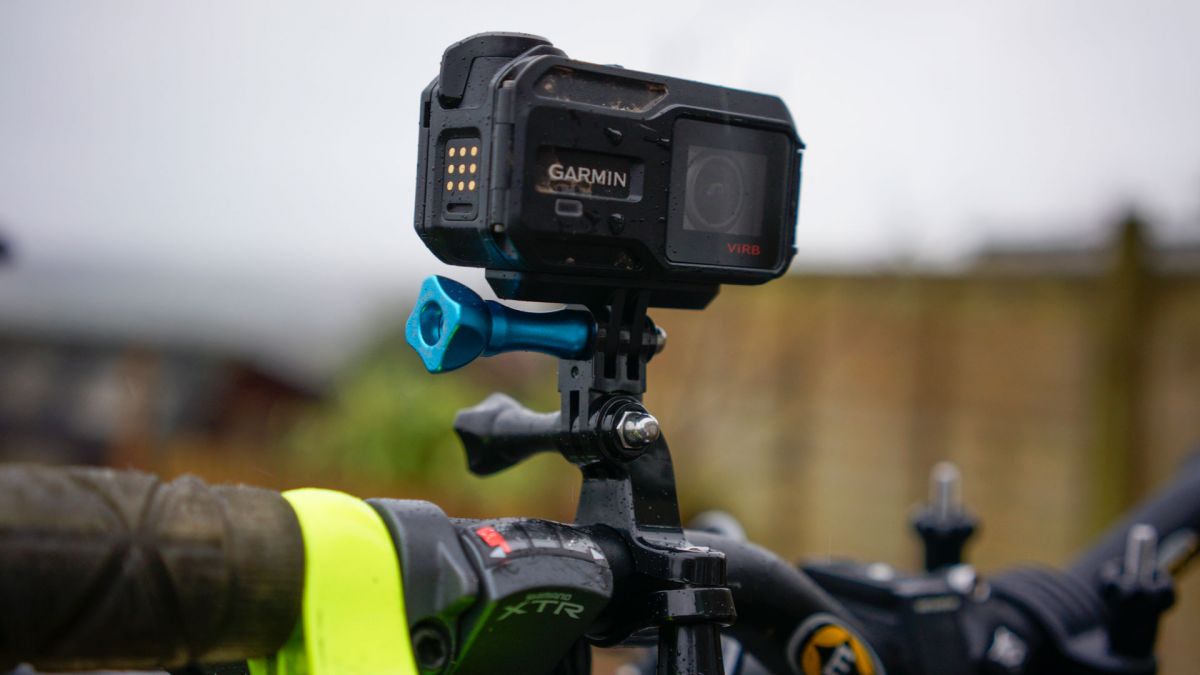
There are two Virb models – the XE (the E stands for Elite) and the almost identical Virb X, the entry model. The feature sets are similar, and both models feature a 1/2.3in CMOS with 12.4 million pixels. The major difference is the top capture resolution and frame rate. The Virb X can capture a maximum resolution of 1080p at 30fps, but the Virb XE captures 1440p at 30fps and 1080p at 60fps.
Both the X and XE feature Garmin’s G-Matrix data feature, which is basically Wi-Fi, Bluetooth, GPS, an accelerometer and Full ANT+ sensor capabilities. ANT+ is a wireless standard that enables the cameras to gather data from other devices such as heart monitors. This compatibility with other devices is unique to the range and users who subscribe to Garmin hardware and compatible software are able to get a full picture of their activities through the data and visuals that these devices capture.
Build and handling
Compared with Garmin’s previous action camera the Virb Elite, every aspect of the XE’s design is changed. There’s no longer a handy screen on top, the side mounted sliding on/off switch has gone and most notably the shape is completely different.
The new design scraps the bullet cam style of the previous generation and instead adopts the more popular box design, although unlike most GoPro copycats, the Virb’s style is unique. It’s a long rectangular box which gives it a slightly lower yet longer profile than the GoPro Hero4 Black. The box style makes it far easier to chest mount than the old Virb Elite, but all other mounting options remain pretty much the same.
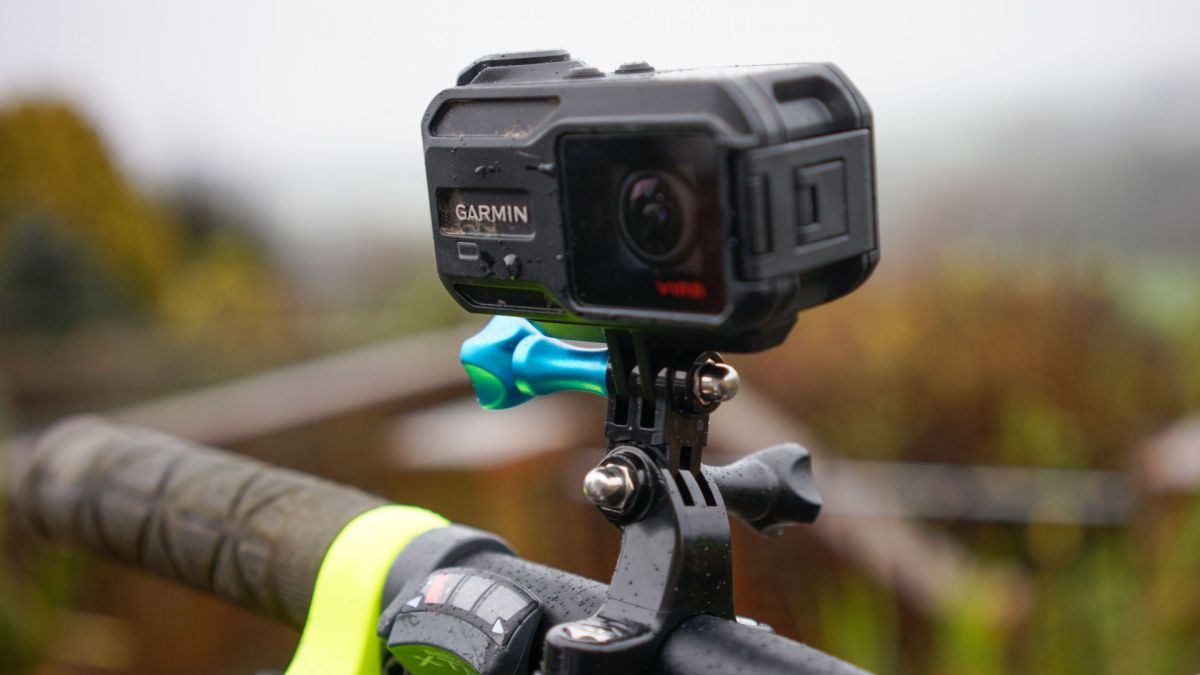
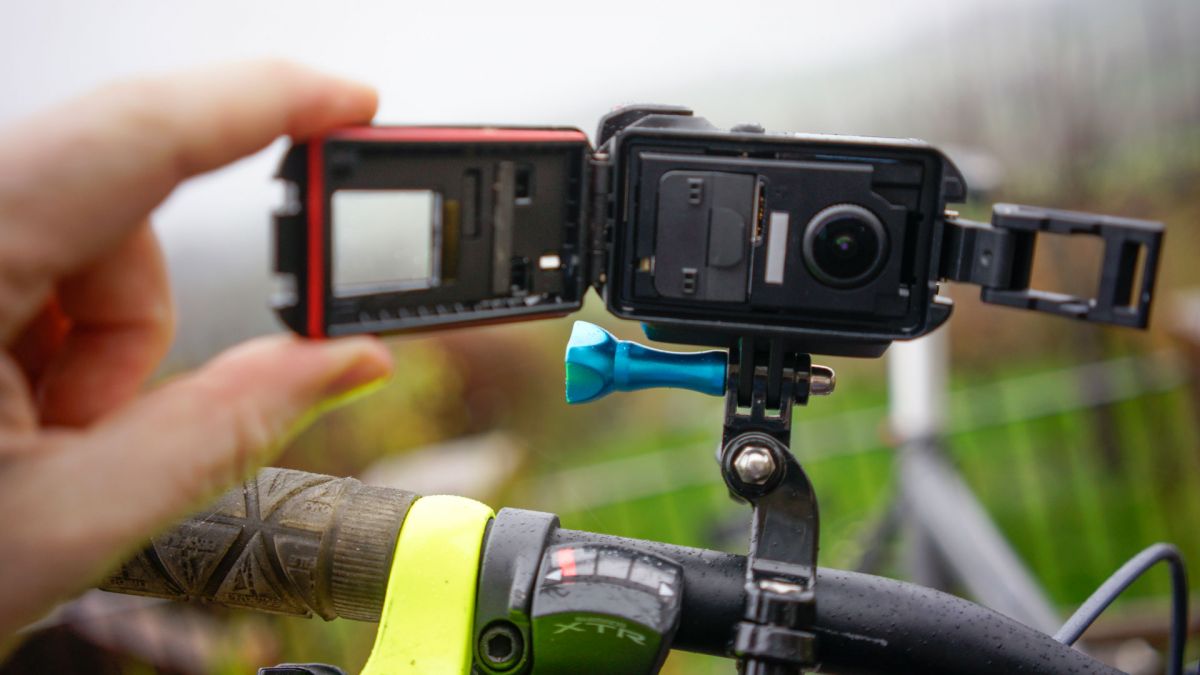
On the side of the body is a lever catch which is easy to release when intended but secure enough to make it extremely unlikely that it will be released accidentally. The door flips open to reveal the battery compartment, lens and memory card slot. By the side of the lens there’s a slot for moisture strips, although I also found it handy place to stash an additional memory card when on dry land. Moisture strips are essential when using the camera in water as they help to prevent the lens from misting up. The lens built into the front of the casing is hydrophobic – it’s designed to repel water droplets and smears. This protective layer does seem to work and also helps to prevent unwanted dirt from sticking to the lens in use. As always, though, it’s a good idea to check the lens on a regular basis anyway.
Closing the door and fastening the catch seals the camera making it waterproof to 50m depth – this compares with the original Virb Elite’s very limited 1m depth. On the exterior are three buttons and a lever. The two small push buttons access the menu and power, and these double as navigation buttons when the menus are active. The other button resembles a traditional camera shutter button with the sliding lever surrounding it. You simply push this to take a picture on the 12 million pixel sensor. However, when navigating menus this shutter button can be used to confirm selections.
Around this button is a switch lever that activates recording – switch it forward to start, back to stop. This lever will also automatically switch the camera on and start recording in one, so there’s no need to use the separate power button when you’re out on the trail. This design also makes it extremely easy to use the camera when wearing gloves and is a huge improvement over the all too common push button operation.
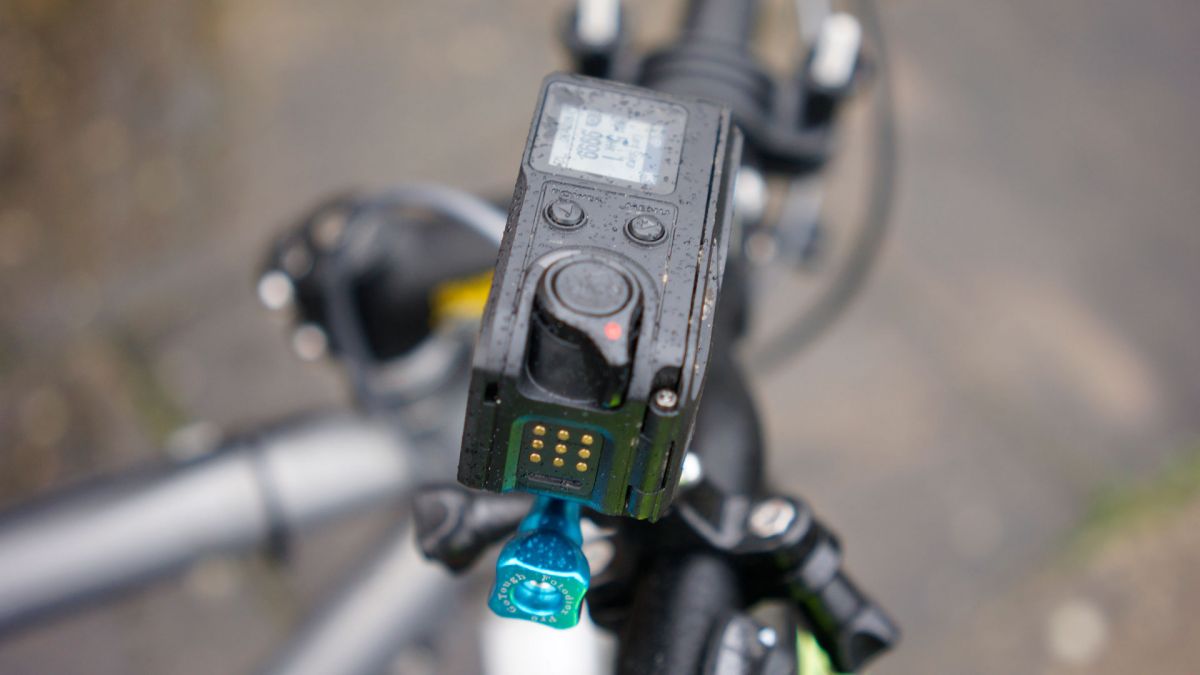
Another big change is the way the camera can be mounted. Previously this had been a proprietary design unique to Garmin, and although it worked well the number of mounts available when compared to the GoPro was limited. Garmin has thankfully changed the mounting design, so gone is the clip on cradle, now replaced by the more commonplace GoPro style mount. This change makes sense and enables the XE to be used with the vast selection of existing GoPro mounts already on the market.
Connectivity and charging for the Virb XE is unfortunately handled by Garmin’s own proprietary USB connector, so this means that you need to carry the unique cable with you for charging rather than a more standard USB cable now adopted by the majority of other action camera manufacturers. As long as you can keep tabs on the cable then all’s fine, but if you forget it or lose it a replacement will set you back a huge £17/$20.
The battery is a Li-Polymer type rated at 3.8v and 980mAh, in our test this supplied a good 1 hour and 40 minutes of use. This figure is just recording time at 1080p and doesn’t include the time the camera was on stand-by, switching between settings or reviewing footage through an app connection which was all done on the same single charge. In comparison with the GoPro Hero4 Black, the XE enables a good 20-30 minutes more recording time at 1080 and 60fps.
Sensor data capture
Garmin’s unique selling point is the GPS, and when the original Virb was released it was the only company on the market with this feature. However, with the arrival of the TomTom Bandit, Garmin now really has to up its game if it wants to stand out as a viable GoPro alternative. There’s a good selection of sensors including GPS and a gyroscope and the data from these is processed through Garmin’s G-Matrix technology to show speed and G-Force in animated overlays when viewing data back through the desktop software. One sensor that makes a departure however is the altimeter, this was a feature of the original Virb Elite.
Information that is captured in camera can then be displayed in the footage when editing using the Virb Edit software. This is available for both Mac and PC users and is relatively easy to use both when editing and exporting your footage. Unfortunately, at present there are no auto edit features in this software which, with the amount of data that’s captured during the recording, seems a real shame.
The software does have some great features and will enable you to overlay the GPS and sensor data quickly with a good selection of pre designed overlays. However the edit features really are limited. For example, if you film continuously without stopping or starting the recording but adjust the position or angle of the camera, there is no way to simply rotate part of that footage. Instead, you must split the clip that you want out from the rest of the footage, export and then re-import.
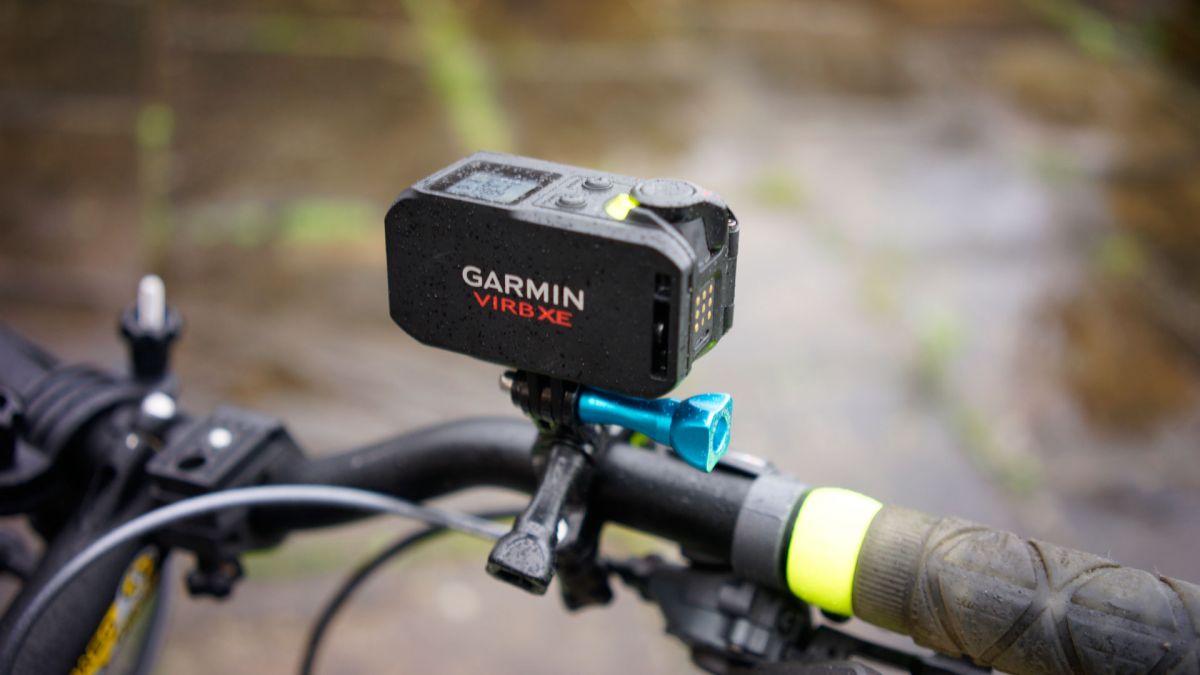

The app is functional and like the desktop software works well enough but has none of the additional features or fineness that we’re starting to expect. The live view stream is of a good quality but does suffer from lag and is noticeably slower when compared with the connection speed and reliability of the TomTom and GoPro cameras.
When it comes to reviewing footage through the iOS app on an iPhone 6 the video playback is a little slow and there are no built in features to edit – instead, footage must be download and then edited in your app of choice.
At present, every action camera needs a must-have feature to make it stand out. Some, like the shake to edit feature of the TomTom or 4K video at 30fps on the GoPro Hero4 Black are obvious, but Garmin has my personal top-ranking feature – it enables you to locate your camera when you lose it, or at least shows you the last known GPS location. This location is shown on a map through the mobile app, so if a mount does fail and your Virb drops to the ground without you noticing, then you have at least some chance of relocating it.
Video options and performance
Resolution and frame rates are the key specs for any action camera – you need a good, high resolution to capture the fine detail and high frame rate so that it’s possible to play footage back in slow motion. Here the XE only takes only a small hike in resolution to 1440 at 30fps over the Virb Elite. Recording at 1080p at both 30fps and 60fps captures footage at 25Mbit/s.
GoPro started a trend with ProTune for pro options and these are now starting to become an action camera standard for top branded models. Here Garmin follows the trend by enabling a ‘Pro’ mode for adjusting white balance, ISO, sharpness, exposure, and colour profile. Garmin has also added a winning multicam sync feature that uses a GPS timestamp – this will be a welcome addition for all video editors.
Two other welcome features are the built in image stabilization and zoom. These are both digital but work well. Image stabilization is accessed through the camera’s menu in the app and just helps to reduce camera shake to create smooth motion footage. The stabilization is good but don’t expect the same results that can be obtained from a steadicam or gimbal. The zoom feature is also handy and has three zoom settings. Using these is good when filming people and want to eliminate the lens’s fisheye distortion from the footage.
Video quality
Compared to the latest cameras, the XE has a relatively low top resolution. However, the quality of the footage is exceptional, with good clear detail and bright, well-saturated colour. The lens also fares well and keeps a limit on flare, despite the fisheye perspective.
Switching to the Pro mode enables you to set the ISO and white balance manually, which can be useful when riding through woodland as it stops the exposure from jumping as you go from light to dark.
In lower light conditions the small sensor coped well but, as expected, there were noticeable signs of noise and when trying to use the camera at dusk that noise becomes quite unpleasant. This level of noise in low light is not unusual for action cameras, however.
Other resolution include 240fps @ 480p which is good enough for footage shown on mobiles say, and captures slow motion action well. More standard resolutions include 1080p at 60fps and 720p at 120fps – these are not groundbreaking but at least the quality of the footage is excellent. The slow motion 720p footage proved good, with smooth motion and frames with a decent amount of clear detail.
Garmin Virb XE Overlay: Sample footage from the Virb XE showing one of the many options for overlaying the captured GPS data.
Garmin Virb XE tricky light: Sample footage from the Virb XE showing how it deals with tricky lighting conditions. This footage shows the camera shooting into the sun. Although the video looks slightly underexposed, it has handled the auto exposure well and a slight brightening of the footage kicks out the detail without too much noise being introduced.
Garmin Virb XE Pro Video: The Virb XE has a series of Pro video options similar to those found under the ProTune settings on the GoPro. These enable you to set the ISO, Sharpness and colour and are a handy addition if you’re a professional video editor.
Garmin Virb XE Glare: Glare can be a major issue and is never that difficult to show with action cameras. Here the camera, lens and case work well to keep glare to a minimum and perfectly acceptable for this angle of shot.
Verdict
The new Virb XE is one of the highest-quality action cameras presently on the market. The footage shot at 1080p at 60fps can hold its own against any of the GoPro models, with sharp detail, well saturated colour and smooth motion. However, with GoPro and TomTom offering 4K, high frame rates and the Bandit having the unique auto edit features, Garmin needs to keep support and software upgrades for the desktop and mobile app coming to retain its position in the market.
We liked
Outstanding build and video quality. Reservations over the change in design were quickly resolved in use because the change from bullet to box makes it easier to mount. The addition of a traditional style shutter butter and single lever operation make the Virb XE exceptionally easy to use and the fact that it is now waterproof without the need for an additional case is an added bonus. The GPS and motion capture are really this camera’s unique selling point and being able to see the speed and G-Force achieved whilst out on a ride adds an extra element of entertainment to videos afterwards.
We disliked
Proprietary cables are a pain as they’re all too easily lost or forgotten. The app and software feel a little dated and don’t take full advantage of the data captured by the camera. While the camera and video quality is superb, the software side of the Virb XE really needs to improve if it’s to retain its position in the techradar.com top ten action cameras list.

Final verdict
The Virb XE will appeal to outdoor enthusiasts who want to capture the action and check out speed and other related data. Integration with other Garmin devices such as heart monitors takes a while to setup but once done the added information is of real interest.
Video quality surpasses that of many other action cameras and the one-lever operation is a real winner, especially if you’re involved with an activity where you’re wearing gloves and the traditional push button on/off setup is difficult to operate.
The XE is a solid performer and you won’t be disappointed with the quality. Video resolution and frame rate options are limited, though, and very soon these will seem dated. The software looks nice and is functional but leaves you with the feeling that this camera has far more to offer than either the mobile app or software allow.
Source: techradar.com









